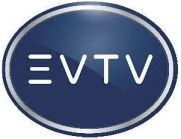The information in this preliminary prospectus is not complete and may be changed. We may not sell these securities until the registration statement filed with the Securities and Exchange Commission is effective. This preliminary prospectus is not an offer to sell these securities and it is not soliciting an offer to buy these securities in any state or jurisdiction where the offer or sale is not permitted.
SUBJECT TO COMPLETION, DATED [
], 2022
PRELIMINARY PROSPECTUS

Shares of Common Stock
We are offering shares of our common stock, $0.00001 par value per share.
Our
common stock is listed on the OTCQX tier of the OTC Market under the symbol “EVTV.” On April [●], 2022, the last reported sale price for our common stock on the OTC Market was $[●] per share. We have applied to list our common stock on the Nasdaq Capital Market, or Nasdaq, under the symbol “EVTV.” Accordingly, while the estimates set forth above represent our bona fide estimate of the range of public offering price per share and number of shares to be issued, consistent with the requirements of the Securities and Exchange Commission and Nasdaq, we may ultimately issue more shares at a lower price or fewer shares at a greater price to achieve such minimum value of unrestricted publicly held shares. We will not consummate the offering unless such minimum value will be achieved and until we receive approval from Nasdaq to list our common stock.
Investing in the securities involves a high degree of risk. See the section entitled “Risk Factors” beginning on page 20 of this prospectus for a discussion of information that you should consider before investing in our securities.
We are an “emerging growth company” under the federal securities laws and have elected to take advantage of certain reduced public company reporting requirements for this prospectus and future filings.
Per Share |
Total |
|||||||
Public offering price |
$ |
$ |
||||||
Underwriting discounts and commissions (1) |
$ |
$ |
||||||
Proceeds to us, before expenses |
$ |
$ |
||||||
(1) |
This offering is being underwritten on a firm commitment basis. We have granted the underwriters an option for a period of 45 days from the date of this prospectus to purchase up to an additional shares of our common stock at the public offering price less the underwriting discount and commissions, or the over-allotment option. |
Neither the Securities and Exchange Commission nor any state securities commission has approved or disapproved of these securities or passed upon the adequacy or accuracy of this prospectus. Any representation to the contrary is a criminal offense.
The underwriter expects to deliver the securities to the purchasers on or about , 2022.
Roth Capital Partners
The date of this prospectus is , 2022.
